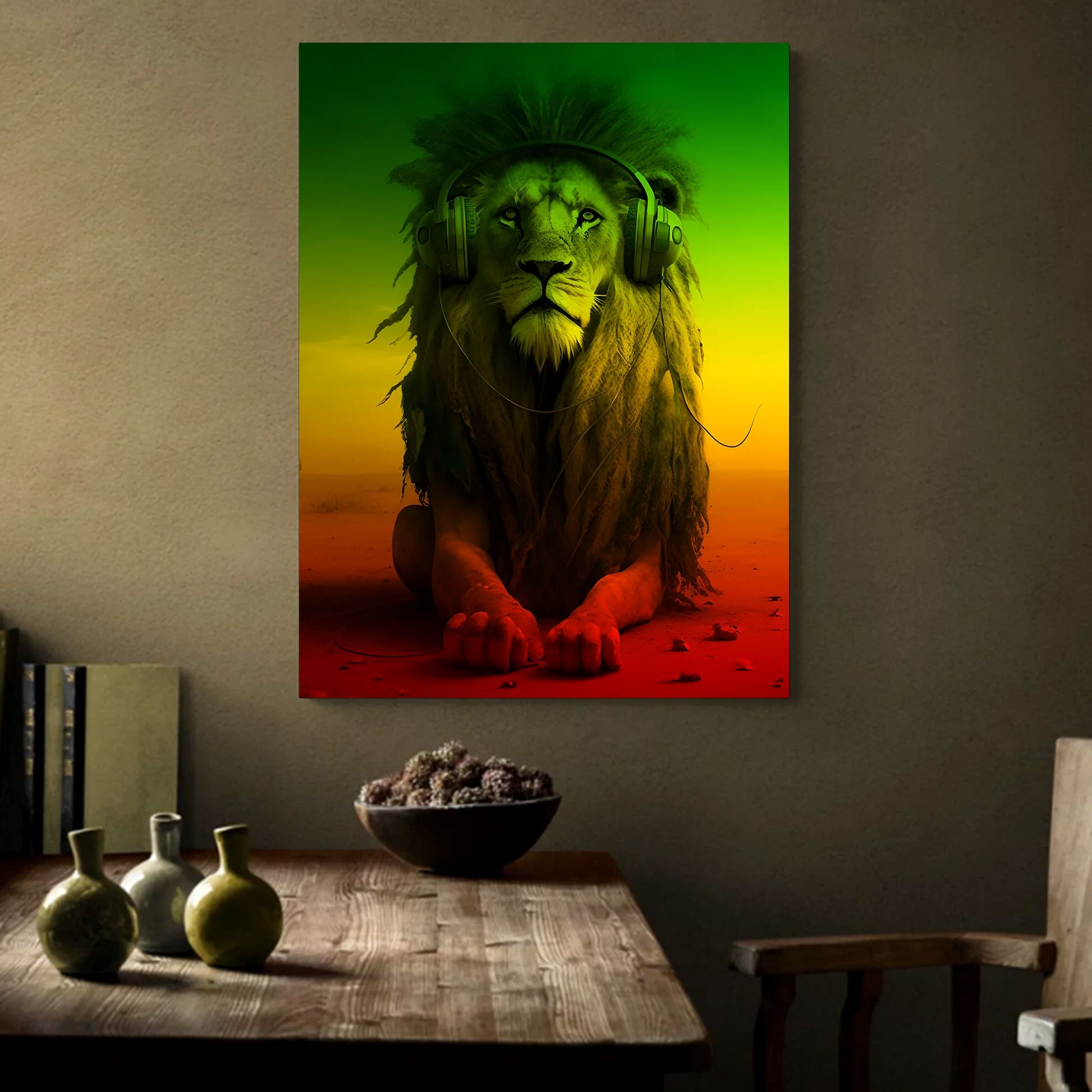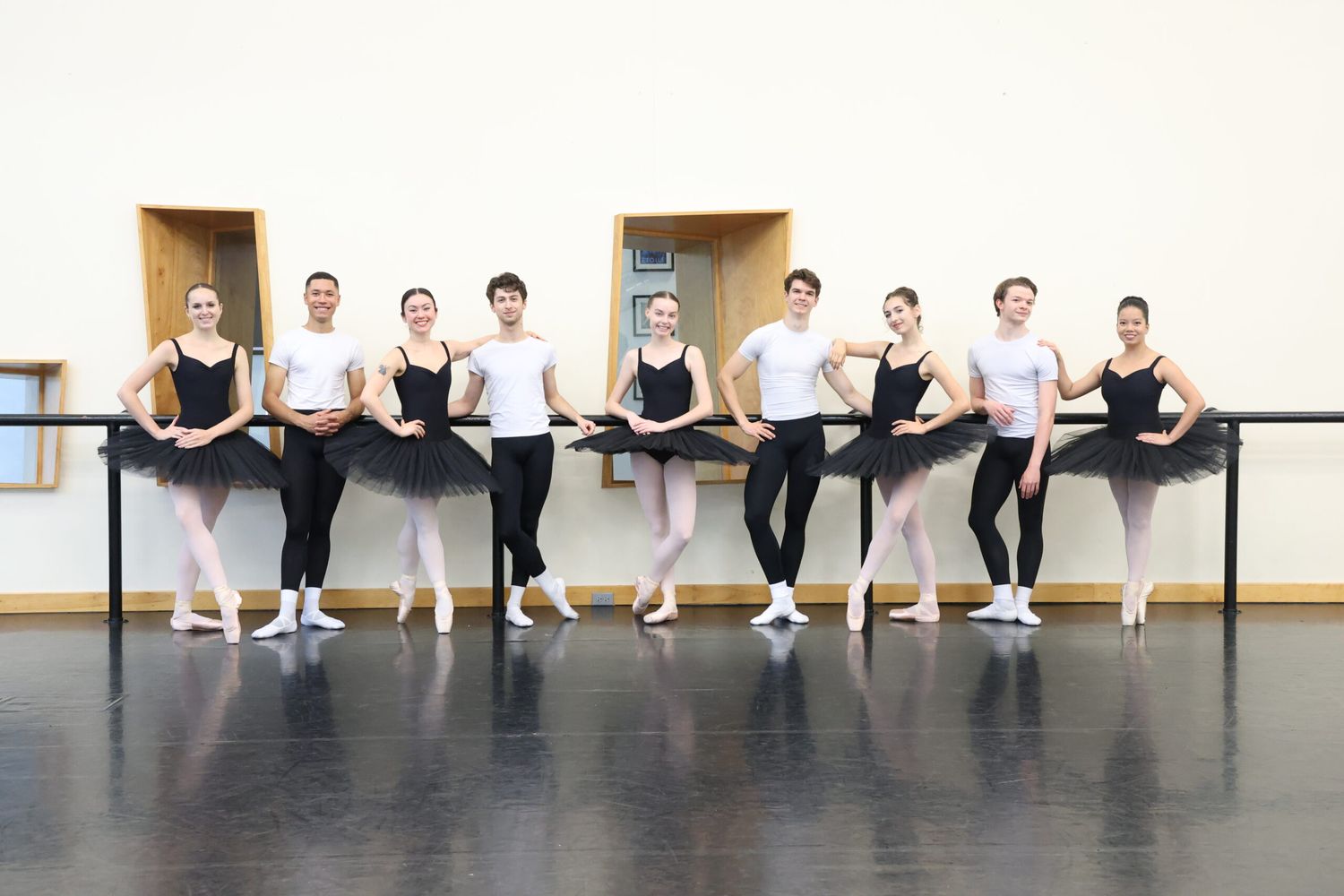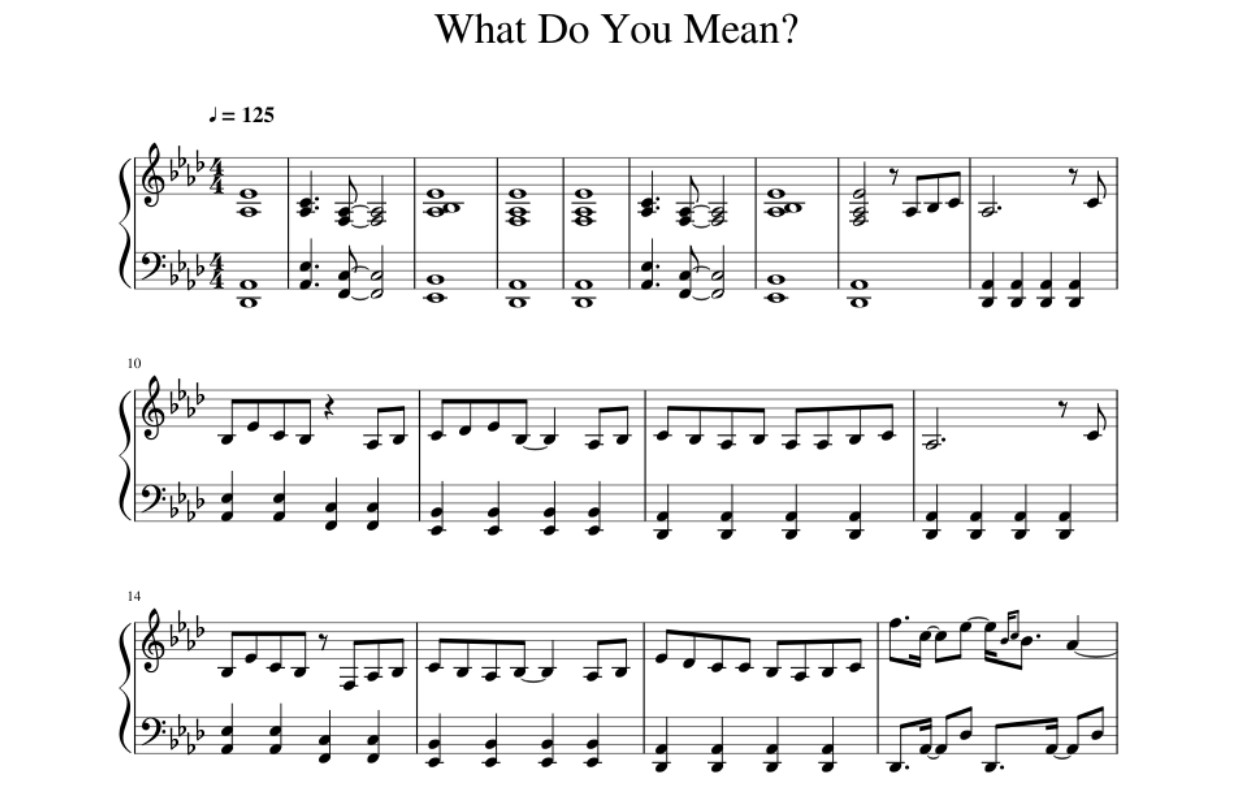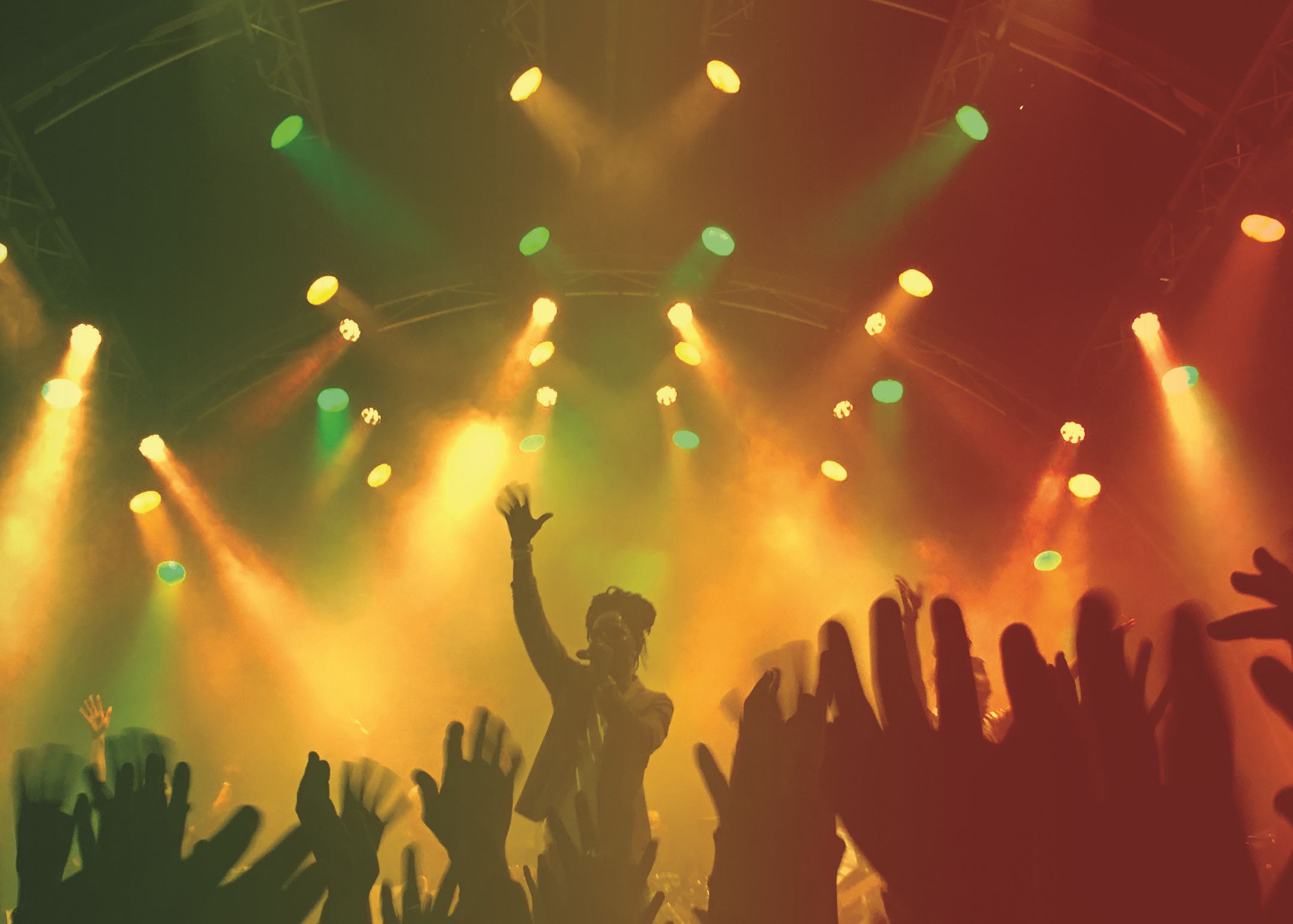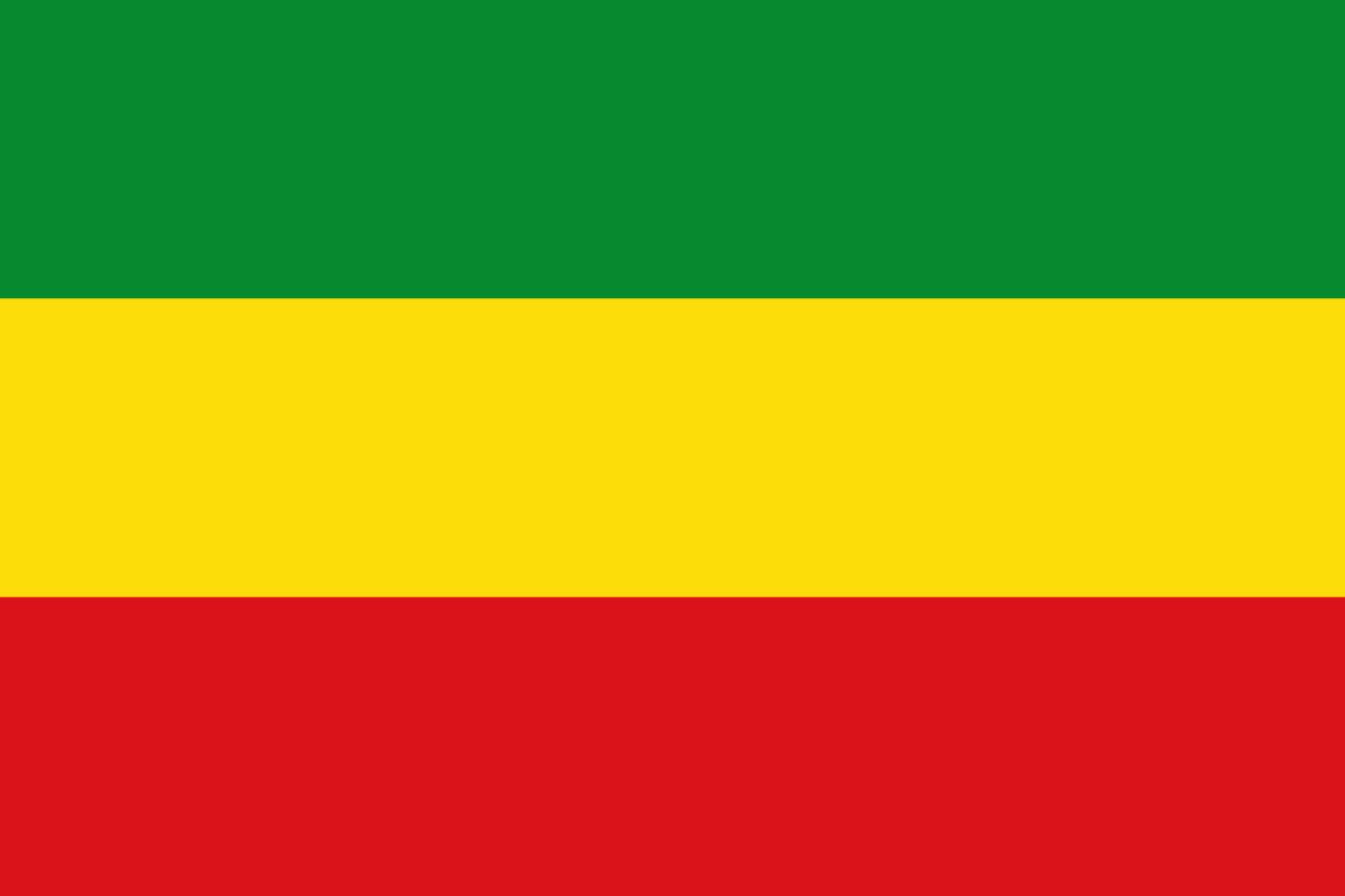

Reggae
What Do Reggae Colors Mean
Modified: January 22, 2024
Discover the meaning behind reggae colors and their significance in the vibrant world of reggae music. Explore the symbolism and cultural associations of this iconic genre.
(Many of the links in this article redirect to a specific reviewed product. Your purchase of these products through affiliate links helps to generate commission for AudioLover.com, at no extra cost. Learn more)
Table of Contents
Introduction
Welcome to the world of reggae, a vibrant and captivating music genre that originated in Jamaica in the late 1960s. Reggae music is not only known for its infectious beats and soulful melodies, but also for its rich symbolism and cultural significance. One of the most distinctive aspects of reggae is its use of colors as a means of expression and communication.
In reggae culture, colors play a crucial role in conveying messages, representing different emotions, and fostering a sense of identity and unity among its followers. From the signature red, yellow, and green of the Rastafari movement to the diverse spectrum of hues used in reggae album covers and artwork, these colors have become synonymous with the essence and spirit of reggae.
In this article, we will delve into the deep meaning behind the reggae colors and explore their significance within the reggae community. We will uncover the symbolism of red, yellow, green, and black, and dive into how these colors are intertwined with the Rastafari movement. So, join us as we embark on a colorful journey through the world of reggae and discover the stories behind its vibrant hues.
The Significance of Reggae Colors
In reggae culture, colors are not just aesthetic elements; they carry deep symbolism and meaning. Each color used in reggae has its own significance, representing various emotions, ideas, and values. These colors serve as a way to express the essence of reggae and convey messages of unity, love, and resistance.
Reggae colors are often associated with the Rastafari movement, a religious and cultural belief system that emerged in Jamaica during the 1930s. The Rastafari movement heavily influenced the development of reggae music and its accompanying symbolism. Let’s explore the significance of the primary reggae colors:
- Red: The color red represents passion, love, and the blood of those who have struggled and sacrificed. It is a symbol of strength and determination, embodying the fighting spirit of reggae music. Red also signifies the struggles faced by the African diaspora, the unity among black people, and the quest for freedom.
- Yellow: Yellow is associated with sunlight, warmth, and positivity. It symbolizes joy, happiness, and the bright spirit of reggae music. Yellow also represents the wealth of Africa and the golden crown, a powerful emblem of the African heritage revered by the Rastafari movement.
- Green: Green represents nature, growth, and life. It symbolizes the lush landscapes of Jamaica and the connection to the Earth. Green is also associated with the agricultural practices of the Rastafari movement, emphasizing self-sufficiency and sustainability.
- Black: Black signifies strength, solidarity, and resistance. It pays homage to the African roots of reggae music and acknowledges the struggles faced by people of African descent. Black also represents the Rastafari’s pride in their African heritage and their stance against systems of oppression.
These reggae colors not only hold individual significance but also work together to create a cohesive message. The combination of red, yellow, and green is deeply rooted in the Rastafari movement and forms the iconic Pan-African flag. This powerful symbol embodies the unity of African people and represents the fight for freedom, justice, and equality.
Now that we have explored the significance of reggae colors, let’s dive deeper into each color’s representation and its connection to the Rastafari movement.
Red: Symbol of Passion and Love
In the world of reggae, the color red holds deep symbolism and represents various aspects of the human experience. Red is associated with passion, love, and the intense emotions that fuel the music and culture. It is a powerful color that embodies the energy and fire within reggae music.
Red is often seen as the color of love and affection, representing the strong emotional connections that are formed through the power of music. In reggae, love is a central theme, with many songs expressing romantic love, love for humanity, and love for one’s heritage.
Red also symbolizes the blood of those who have struggled and made sacrifices. It represents the resilience and determination of the Jamaican people and the broader African diaspora. Through the struggles faced by black people throughout history, the color red signifies the strength to overcome adversity and fight for justice.
Furthermore, red is closely associated with the Rastafari movement. Rastafarians believe in the divinity of Emperor Haile Selassie I, the former Emperor of Ethiopia. Selassie I is often referred to as the “Lion of Judah,” and red is seen as the color that represents the lion. The lion is a powerful symbol of strength, respect, and protection in Rastafarian culture, and red is used to honor and pay homage to this sacred connection.
Reggae artists often incorporate the color red in their album artwork and stage performances. It adds a visual element that resonates with the passionate and vibrant nature of the music. The energetic presence of red ignites the senses and creates a captivating atmosphere for both performers and listeners.
When you think of reggae, the color red can evoke images of fiery sunsets, the vibrant energy of a live concert, and the deep emotional connections shared among fans. It represents the intense passion and love that reggae music inspires and is a symbol of the indomitable spirit of the people who create and enjoy this genre.
Next, let’s explore the significance of the color yellow and its representation in reggae culture.
Yellow: Representation of Sunlight and Happiness
The color yellow holds a special place in the world of reggae, representing joy, positivity, and the warmth of the sun. It is a vibrant color that radiates happiness and embodies the spirit of reggae music.
In reggae culture, yellow is often associated with sunlight, a powerful symbol of warmth and light. The sun’s rays are seen as a source of energy and life, and yellow captures the essence of this vitality. Yellow represents the bright spirit that reggae music brings to its listeners, uplifting their mood and spreading positive vibes.
Yellow is also deeply tied to the Rastafari movement, where it carries significant meaning. Rastafarians view Ethiopia as their spiritual homeland and believe that their African ancestry is rooted in royalty. The color yellow is associated with the wealth of Africa and the golden crown, representing the noble lineage and heritage of the African people.
Furthermore, the color yellow symbolizes the wealth of the land in Jamaica and the importance of agriculture in Rastafarian culture. The Rastafari movement emphasizes self-sufficiency and the connection to nature, and yellow serves as a reminder of the fruits of the earth and the blessings it provides.
Yellow is often incorporated into the visual elements of reggae, including album covers, stage decorations, and merchandise. It adds a vibrant and lively element to the reggae aesthetic, reflecting the optimistic and cheerful nature of the music.
When we think of reggae, the color yellow brings to mind images of sunny beaches, carefree dancing, and smiling faces. It represents the joyful energy of reggae music and the positive impact it has on its listeners. Yellow illuminates the world of reggae, spreading warmth and happiness to all who embrace its vibrant spirit.
Next, we will explore the significance of the color green and its connection to reggae culture.
Green: Symbol of Nature and Growth
In the realm of reggae, the color green holds a special place, representing nature, growth, and the connection to the Earth. Green is a symbolic color that embodies the lush landscapes of Jamaica and the importance of sustainability and harmony with nature.
Green is often associated with the natural beauty and abundance of the Jamaican countryside. It represents the rich vegetation, tropical forests, and vibrant plant life that are integral to the island’s ecosystem. The color green in reggae signifies the deep respect and appreciation for nature that is woven into the fabric of the music.
Within the Rastafari movement, green holds a strong significance. Rastafarians advocate for a natural and holistic way of life, focusing on self-sufficiency and sustainable living. Agriculture plays a central role in Rastafarian culture, with the cultivation of organic herbs and fruits being deeply valued. The color green serves as a reminder of the importance of nurturing the land, promoting growth, and fostering a harmonious relationship with the Earth.
Beyond its association with nature, green is also symbolic of personal growth and spiritual development. Reggae music often carries messages of empowerment and self-reflection. Green represents the potential for growth and transformation, encouraging individuals to embrace their inner strength and evolve towards a better version of themselves.
Visually, the color green is often incorporated into reggae album covers, stage decorations, and clothing. It adds a refreshing and vibrant touch, reminding listeners of the natural beauty that surrounds them and connecting them to the roots of reggae music.
When we think of reggae, the color green brings to mind images of lush landscapes, bobbing palm trees, and a sense of tranquility and balance. Green represents the reverence for nature, the importance of sustainable living, and the potential for personal growth that reggae music seeks to inspire.
Now, let’s explore the significance of the color black and its representation in reggae culture.
Black: Representation of Strength and Solidarity
In the world of reggae, the color black holds profound symbolic meaning, representing strength, solidarity, and the resilience of black people. Black is a powerful color that embraces the heritage and history of the African diaspora, acknowledging the struggles faced and celebrating the unity within the reggae community.
Black serves as a reminder of the powerful and resilient spirit that has emerged from the struggles and hardships endured by people of African descent throughout history. It represents the strength to overcome adversity, the determination to fight for justice, and the solidarity among black individuals worldwide.
Within reggae culture, black is an emblem of pride in African heritage. It symbolizes the recognition and celebration of one’s roots, emphasizing the importance of embracing and preserving one’s cultural identity. Black represents the unyielding resolve to assert one’s identity and to promote unity, self-determination, and empowerment within the reggae community and beyond.
The color black is closely tied to the Rastafari movement, which places a strong emphasis on African spirituality and the belief in the divinity of Emperor Haile Selassie I. Rastafarians often wear black clothing and accessories as a way to display their pride in their African ancestry and as a symbol of resistance against systems of oppression.
Furthermore, black is a color that transcends boundaries, fostering a sense of unity and inclusivity within reggae culture. It is a color that connects all people, regardless of their racial or ethnic background, embracing the common struggle for equality and justice.
Visually, black is often seen in the attire and accessories worn by reggae artists and fans. It adds a sense of elegance, power, and solidarity to the reggae aesthetic, reminding everyone of the collective strength and determination of the reggae community.
When we think of reggae, the color black evokes images of resistance, strength, and unity. It represents the unwavering spirit of the music and the commitment to social justice that reggae encompasses.
Now, let’s explore how the colors red, yellow, and green are intertwined with the Rastafari movement and their significance within reggae culture.
Rastafari: The Influence of Red, Yellow, and Green
In the world of reggae, the colors red, yellow, and green are deeply intertwined with the Rastafari movement, a religious and cultural belief system that originated in Jamaica in the 1930s. These colors hold immense significance and are prominent symbols within the reggae community.
The combination of red, yellow, and green is often referred to as the “Rasta colors” or the “Pan-African colors” and represents unity, pride, and cultural identity. These colors are symbolic of the Rastafari philosophy, which emphasizes the recognition and empowerment of African heritage and the vision of a united Africa.
Red represents the blood of those who have struggled and made sacrifices. It embodies the strength, determination, and love shared among black people and signifies the fight against oppression and injustice. Red also represents the divine nature of Emperor Haile Selassie I, often referred to as the “Lion of Judah,” and the lion is symbolized by the fiery color red.
Yellow represents the bright and positive spirit, joy, and happiness. It symbolizes the wealth of Africa and the golden crown, representing the noble lineage and heritage of the African people. Yellow is associated with sunlight, warmth, and the optimistic outlook that is central to the Rastafari belief system.
Green represents the lush landscapes of Jamaica and the natural world. It symbolizes the importance of nature, growth, and sustainability. Green is a reminder of the agricultural practices embraced by the Rastafari movement, promoting self-sufficiency and the connection to the Earth.
These colors are not only significant on their own, but they also come together to form the iconic Pan-African flag. The red, yellow, and green stripes symbolize the unity of African people worldwide, transcending borders and promoting solidarity and empowerment.
Within reggae culture, the Rasta colors are widely embraced and used as visual identifiers. They can be seen in the artwork of reggae albums, and many reggae artists and fans sport clothing and accessories in these colors as a way to display their alignment with the Rastafari philosophy.
The influence of the Rastafari movement and the symbolism of the Rasta colors have spread beyond reggae music, extending to various aspects of global culture. These colors have become powerful symbols of resistance, unity, and cultural pride, captivating both reggae enthusiasts and those who resonate with the values they represent.
As we conclude our exploration of the reggae colors and their significance within the Rastafari movement, we find that these colors continue to serve as a visual expression of the vibrant spirit, cultural identity, and collective strength found within the reggae community.
In the world of reggae music and culture, colors hold a significant role in conveying messages, representing emotions, and fostering a sense of identity and unity. The reggae colors of red, yellow, green, and black are not merely visual elements but symbols deeply rooted in the history, beliefs, and values of the reggae community. These colors allow reggae to transcend the boundaries of language and culture, connecting individuals worldwide through a shared appreciation for the music and the powerful messages it conveys.
So, as you immerse yourself in the world of reggae, let the vibrant colors guide you, resonating with the passion, love, positivity, and unity that reggae music brings. Experience the rich symbolism woven into the fabric of reggae and let it inspire and uplift your spirit.
Conclusion
The colors of reggae hold deep symbolism and significance within the vibrant world of reggae music and culture. From the passionate red to the joyful yellow, the natural green to the strong solidarity of black, these colors convey powerful messages and embody the essence of reggae. They represent love, joy, growth, and strength, while also paying homage to the African roots and heritage.
Through the Rastafari movement, the colors of red, yellow, and green have become synonymous with reggae, creating a visual language that unites people across borders. These colors represent unity, cultural pride, and the fight against injustice. They serve as a reminder of the struggles faced by the African diaspora and the determination to overcome adversity.
Reggae music, with its infectious rhythms and soulful melodies, spreads a message of love, equality, and empowerment. The colors used in reggae artwork, album covers, and stage decorations enhance the visual experience and reflect the vibrant energy and positivity of the music.
As you delve into the world of reggae, immerse yourself in the significance of these colors. Let the passion of red, the happiness of yellow, the growth of green, and the strength of black envelop you. Allow them to ignite your spirit, remind you of the interconnectedness of all humanity, and inspire you to stand against injustice and promote unity.
Whether you’re a long-time reggae enthusiast or just beginning your journey, remember the true essence behind the reggae colors. They go beyond mere aesthetics; they are a reflection of the rich history, cultural heritage, and powerful messages of reggae music. Embrace the colors of reggae and let them guide you on a vibrant and soulful journey through the music, culture, and spirit of this incredible genre.
So, put on your favorite reggae song, feel the rhythm pulsating through your veins, and let the reggae colors infuse your world with passion, joy, growth, and solidarity.

